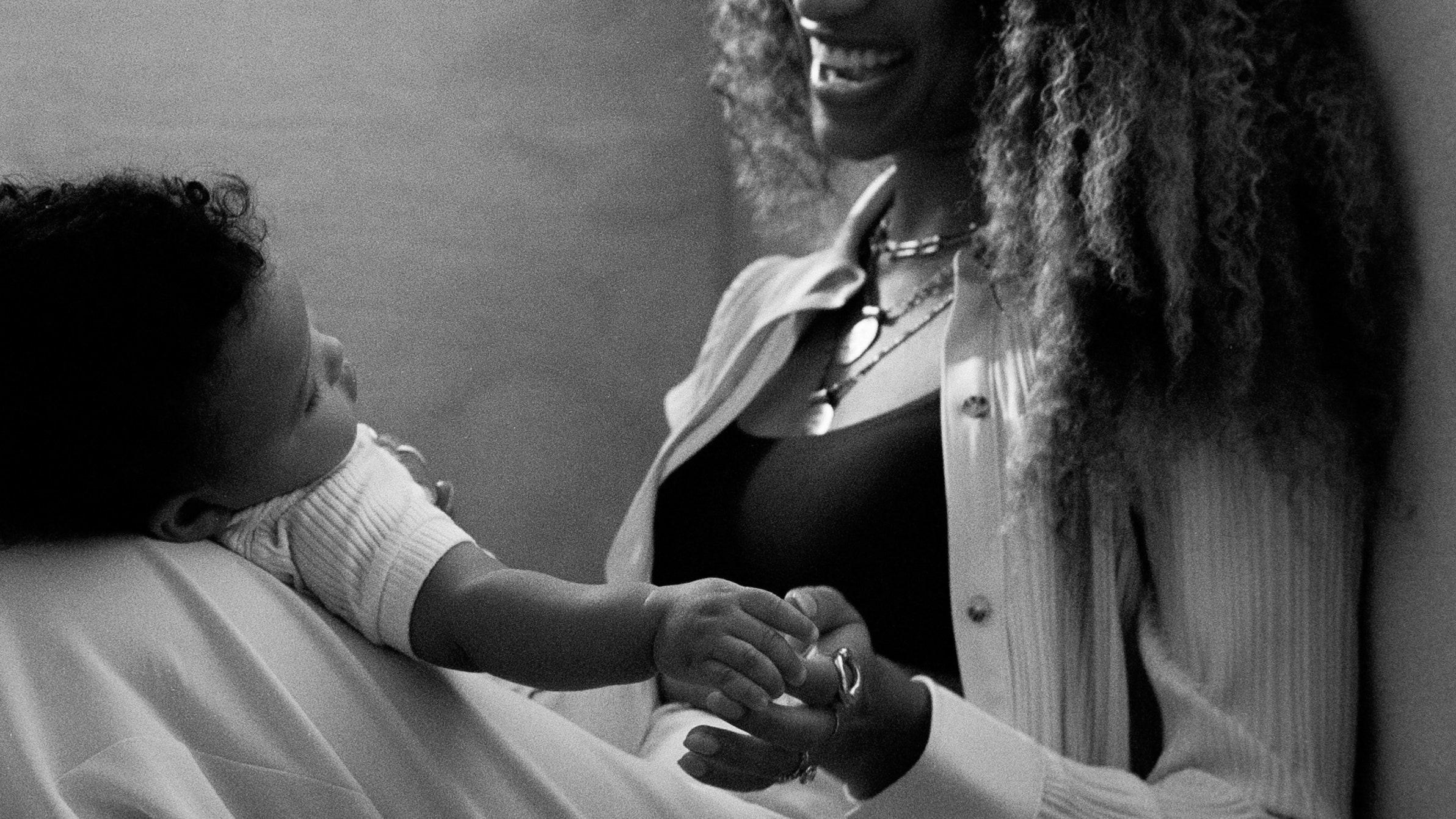You’ve been here before: standing in your closet amid neatly aligned rows of hangers. Finally, your dresses hang neatly zipped, rather than half falling off. They’re filed by color, length, and/or purpose—not jammed in wherever you can find space. Sweatshirts and sweaters are folded, not wadded. Shoes are filed on shelves, not strewn about. There are no heaps of clothing to step over. Fresh off a good declutter, you’re feeling accomplished, empowered, filled with steely resolve—never again will you let your closet get so out of control. This time you really mean it.
We all know the end of this tale, and it’s not that you and your clutter-free closet lived happily ever after. Season after season, year after year, we tackle depressingly familiar decluttering projects with fresh energy, only to see our newly edited and perfected drawers, closets, and cabinets gradually (or rapidly) unravel. It’s not that we don’t try or don’t care. It’s that life, and a world of too much stuff, just has a way of getting ahead of us. That won’t change unless we get more strategic and realistic about clutter—and understand why it keeps coming back and what really needs to change to break the cycle. If you’re ready to make 2023 the year you can whip open an under-sink cabinet without dread and stop rebuying baking supplies that are already buried in your pantry, here are the decluttering tips and strategies that pros say are the actual game changers.
Find a home for every item.
One key to living clutter-free: Everything in your home needs a home. Home organization, ultimately, needs to be about making it super easy to put things away. That means giving items a convenient and consistent spot to “live”—the more obvious, the better. If you’re wishy-washy about where mail lands when it enters the house, it’ll continue to live all over your countertops and other surfaces. But if there’s a recycling bin and a bills basket in the mudroom, you’ll catch all that paper clutter before it proliferates. Professional organizers often recommend going so far as to label bins, drawers, and shelves, at least until you and your family members get into a groove with the new system. “When every item in your home has a home, it’s much easier and quicker to put things away,” says professional organizer Jordan Marks of It’s Organized. “It sounds so simple but it really works!”
Never leave a room empty-handed.
Little habits, not crazy-ambitious cleaning days, are what ultimately keep a home clutter-free. One everyday decluttering hack recommended by professional organizers is to always grab a misplaced item (or three) before leaving a room. In other words, just make relocating items back to their assigned homes part of your daily routine as you move through the house. If you’re on your way upstairs to brush your teeth, grab that sweatshirt you left on the living room sofa and return it to your bedroom. When you go back downstairs, grab that pile of dishtowels from the laundry room, fold them, and put the stack in the drawer by the sink. Come the weekend, you won’t have heaps of clutter to contend with (or at least not as many).
Declutter in smaller spurts.
Why stop at putting things back throughout the day? You can also squeeze in more organizing than you think just by focusing on mini jobs. Many of us tend to do a few massive decluttering projects each year—and feel like a massive failure when the stuff piles back up within a month. What’s more effective is to make decluttering something we do daily. Yes, this sounds like a total drag, but it’s actually weirdly satisfying. Instead of opening your leggings drawer and shoving C-list pairs to the side while digging for one of your favorites, take just five minutes to weed out the ones you dread wearing. Make a donation bag and put it right in the car, so it won’t sit in your bedroom indefinitely. When you open your leggings drawer tomorrow and see only favorites neatly stacked, go ahead and gloat. You are awesome. Tomorrow: skin care edit.
Refresh your spaces with the season.
Big modern-day closets come with one downside: We’re not all forced to rotate our clothes seasonally. Rotating seasonal clothes is an old-school habit worth adopting, since it naturally encourages us to rethink what we really need, get rid of items we no longer use, and reconsider how our wardrobes are most efficiently organized. “Season changes can offer a renewed outlook for the weeks ahead, or the onset of an upcoming event can also be a motivator for decluttering,” says professional organizer Marissa Hagmeyer of Neat Method. “The key is to ruthlessly edit your space and set limits to simplify each area. For example, put donations into your car to ensure accountability and follow-through.” To remind yourself to do a seasonal edit, block off some dates in your Google calendar now.
Employ these organizing hacks.
Rarely will you catch an organizing pro using pantry shelves or drawers as is—there’s almost always an additional tool employed to keep these areas neat and clutter-free. “Many areas become dysfunctional because they’re too deep and items get pushed to the back and lost behind other things,” explains professional organizer Kate Pawlowski of Done + Done Home. Her favorite, super-versatile fix: clear plastic bins with handles. “They act like drawers in places like pantries, refrigerators, closets, and under the sink, and the ability to pull out a bin to see what’s in the back can make a space fully functional,” she says. Another clutter-preventer: lazy Susans. “Turntables are your best friend,” says professional organizer Rachel Rosenthal of Rachel & Co. “They make just about every space more functional, allowing you to easily access items on a high shelf, take advantage of a corner that would otherwise be dead space, or increase storage in a tight spot.” They come in all sizes, from sleek ones perfect for the pantry to larger divided ones that are useful in spots like under the kitchen sink or in the laundry room. One more surprisingly versatile decluttering tool: purse dividers. “This might be my team’s most-ordered item on Amazon,” Rosenthal says. “So helpful in the closet for organizing all kinds of smaller items that tend to fall over and not stay in place, but we also use them for things like creating an iPad charging station.”
Conjure storage space out of thin air.
Not blessed with a pantry, or lacking bathroom storage? Take advantage of vertical space. “People are often short on space and long on ‘stuff,’ so the best home organization products we implement with our clients are ones that take advantage of unused space—behind closed doors being an excellent example,” Pawlowski says. “An over-the-door rack can corral small items in a bathroom, front hall closet, playroom, or any area that could benefit from a few extra bins but lacks any place to put them.” In the kitchen, consider a customizable wall organizer that lets you add wall storage space. In a bedroom or bathroom, you could add a full-length mirror that doubles as storage for clutter culprits like toiletries, beauty tools, and hair accessories. For electronic clutter, check out outlet shelves, a smart little hack for holding an Alexa, Bluetooth speaker, or a phone while it charges, so all of the above (and their associated wires) needn’t clutter up key surfaces.
Take the pressure off.
After the initial burst of motivation has worn off, decluttering can quickly become exhausting—physically but also mentally. Part of that is decision fatigue. An hour into editing your closet, it’s hard to think straight about whether you’ll actually wear that once loved sequined romper to some future hypothetical holiday party. So go ahead and let yourself off the hook—for now. “If you feel you can’t get rid of things just in case you need them in the future, place those items in what I call a waystation, which is a box tucked away somewhere out of sight,” says professional organizer Melissa Maker of Clean My Space. The catch: You have to make a calendar note to revisit that box in six months or one year. When that time comes, if you haven’t missed most of the items at all—and have enjoyed the free space they left behind—you’ll feel much more motivated to go ahead and donate them.
Put feelings in their place.
Emotions also play an outsized role in why we accumulate clutter. It can be genuinely difficult to let go of items we attach special memories to, or even items we had high aspirations for that didn’t quite pan out (#buyersregret). When we get overwhelmed by feelings entangled with our clutter, procrastination ensues. Acknowledging this factor going in will help you better navigate. As you declutter a space, come prepared with a mental strategy for pushing past discomfort. “If you take the time at the beginning of your organization session to remember there is likely an emotion behind why you want to hang on to something, it can help,” Rosenthal says. “Find a tactic that works for you, whether that’s the famed ‘Does this spark joy?’ [à la Marie Kondo] or taking a photo of a beloved item so you have that reminder, while remembering that the item doesn’t hold the memories—you do.”
Rethink your value system.
Sometimes we hold on to stuff because of its monetary value, even if we never use it. It helps to focus on the mood boost you’ll gain by getting rid of all that stuff, in terms of how it will make space in your home and streamline your routine. “Holding on to an item detracts value from our lives by taking up space and causing stress,” says professional organizer Corinne Monahan of Grid + Glam. “The money has already been spent. Let it go.” Similarly, whittling down our possessions to only what we actually need/use can help prevent future unwise buying decisions that ultimately make us feel bad about ourselves, since we can more clearly see what we actually need. “The other big reason people don’t declutter is because they don’t want to contribute to landfills,” Monahan notes. “None of us wants to do that, I agree. But don’t make your house a landfill because you’re afraid of throwing things away. Instead, commit to not buying more stuff you won’t use.”
Keep the best; lose the rest.
This mantra used by professional organizer Dorothy Breininger—a.k.a. Dorothy the Organizer—offers another strategy for battling the decision fatigue that comes with decluttering. With sentimental items like family heirlooms, kids’ artwork, and random memorabilia, go ahead and keep things you really love, but set a limit by storing them in a labeled bin or tote. “As these types of items come into your space, place them in their assigned storage bin,” Breininger says. “The test comes when you have no more space in a particular bin—this forces you to go through the bin to make room for the best.”
Practice not buying stuff.
Sad but true: You’ll always be decluttering if you haul seven Target bags full of not-even-sure-what into your house every other week. When you have too much stuff, it’s more challenging to streamline and maintain clutter-free spaces. Even if you’re far from a minimalist, you can start by putting back impulse purchases and items that you aren’t certain will still be useful in a year. When you do say yes to an item like a piece of clothing or a kids’ toy, follow that age-old decluttering tip: One in, one out. Donate a like item to make space for the new. “When people ask us for help, the common denominator is almost always too much stuff,” Pawlowski says. “It’s not the configuration of a room, the need for more bins, or a home that’s too small. It’s that the amount of things we own is overwhelming and it all becomes clutter that we have to deal with.”
Petra Guglielmetti is a health, wellness, and beauty journalist who taps into a broad network of experts to write in-depth service articles for leading publications like Businsiders, Health, Real Simple, and Parents.
More decluttering tips:




